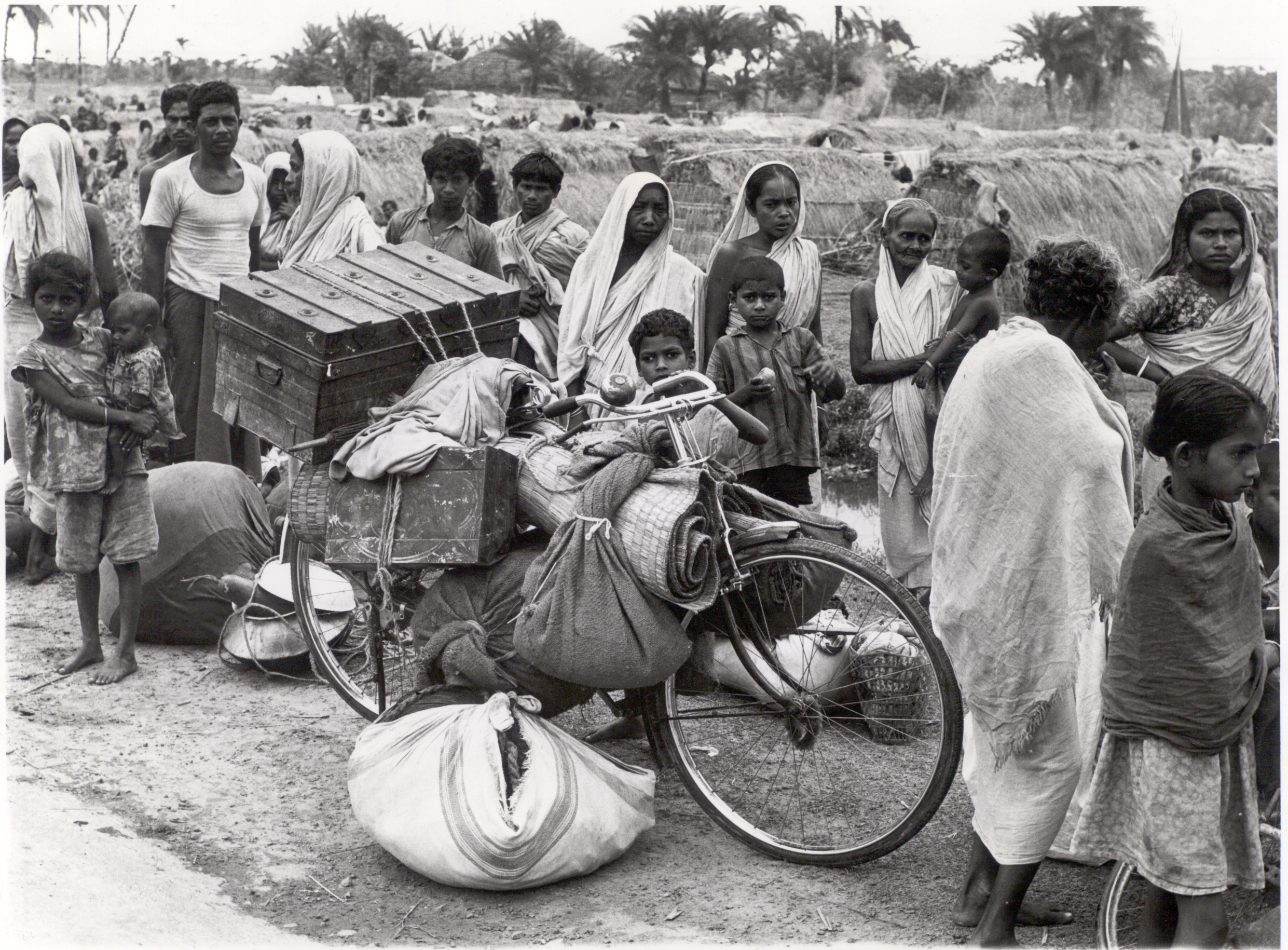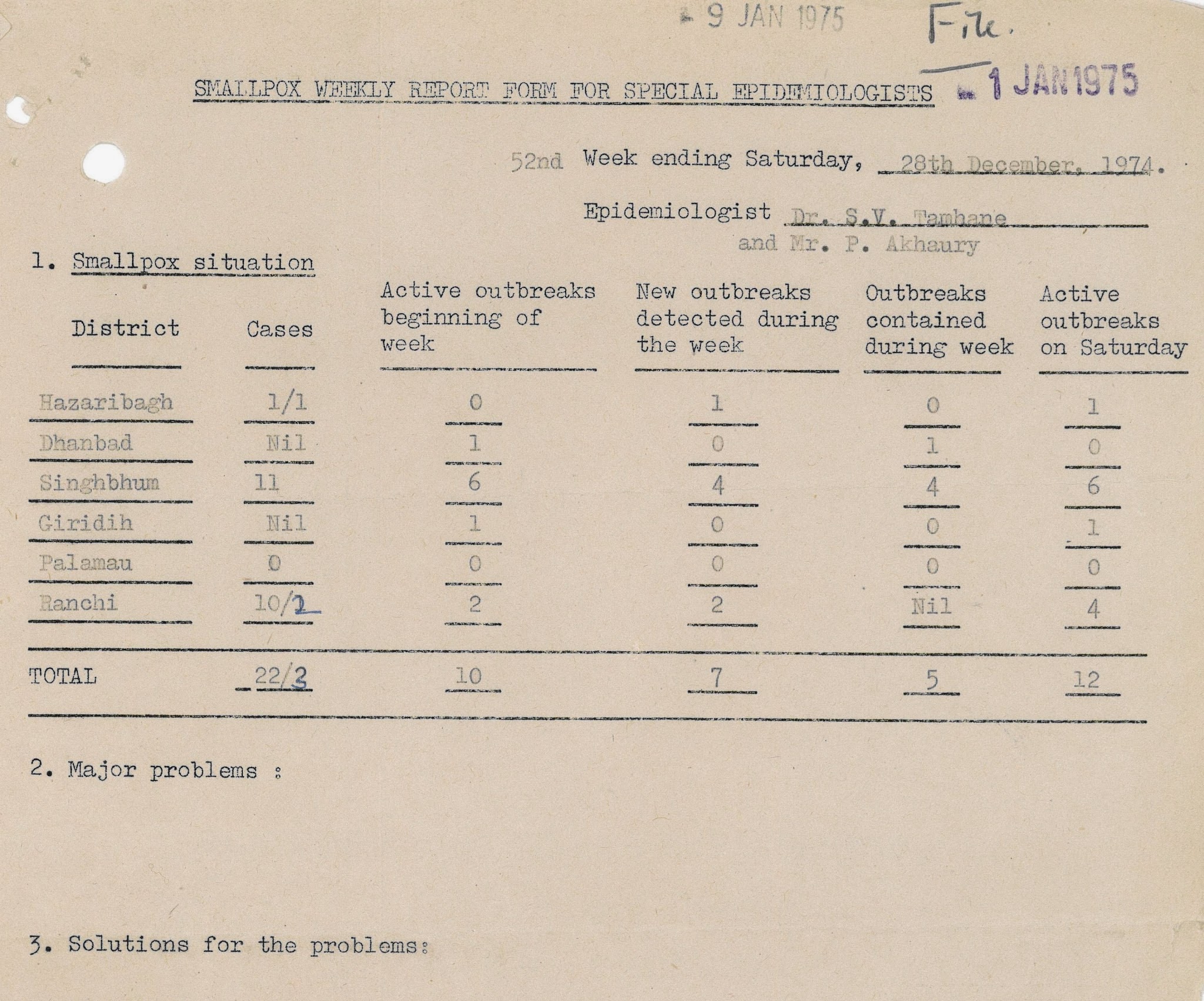Amongst the project files in the Oxfam archive there is a series of correspondence between Dr. John Luscombe Tester (1920-2006) and Leslie Kirkley (General Secretary/Director 1951-1974) and other members of the Oxford Committee for Famine Relief, discussing The Edinburgh Medical Missionary Society’s (EMMS) hospital in Nazareth. This includes, as Kirkley describes them, Tester’s ‘lively and informative reports’.
Dr. John L. Tester joined The Nazareth Hospital’s staff in 1952 and later became its administrator/superintendent: ‘Under his tenure, the hospital developed specialized work in departments, upgraded services, and built various buildings.’ His obituary in British Medical Journal (1 July 2006; Vol.333:48.5) reads as follows:
John Tester was a meteorologist stationed in Palestine during the Second World War. On his first visit to the Edinburgh Medical Missionary Society’s hospital in Nazareth, the medical superintendent thanked him for his help with a patient with the prophetic words: “From now on you are on the staff of this hospital.” After house jobs John returned to Nazareth in 1952, being superintendent from 1957 to 1969. In 1969 he became home director of the Edinburgh Medical Missionary Society but was soon recruited to the newly formed Scottish Health Advisory Board, where he served until retirement.
This collection of letters is in a file (Oxfam reference ISL 002) documenting a small number of grants and supplies that Oxfam gave to The Edinburgh Medical Missionary Society for their hospital in Nazareth in 1950s.
Despite being only a handful of letters they provide a fascinating insight into the politics of the region during this period, especially the impact of the founding of the state of Israel in 1948. This brought about an especially difficult time for the hospital in Nazareth as the patient numbers increased due to the 20,000 Palestinian refugees who had left the surrounding villages to find security in Nazareth.
Historical Background
The Edinburgh Medical Missionary Society was originally founded as the Edinburgh Association for Sending Medical Aid to Foreign Countries but changed its name in 1843. It was established by a group of doctors in order to ‘circulate information on medical mission; help other institutions engaged in the same work and assist as many Missionary stations as their funds would permit.’
The hospital in Nazareth was founded by Dr Kaloost Vartan (1835-1908), a former EMMS student, who had originally been sent to Beirut by the London Society for Sending Aid to the Protestants of Syria. He was ‘adopted’ by the EMMS and went to Nazareth where he opened a dispensary in 1861.
 |
|
Dr. Kaloost Vartan opened the dispensary (1861) which became the Nazareth Hospital
© “EMMS Nazareth” 2009
|
Today, the hospital is owned by The Nazareth Trust. It is a 136-bed general district hospital fulfilling a vital role as part of the Israeli healthcare system. It has the only Accident and Emergency facility in the region and functions 24 hours per day. It is arguable that Oxfam’s contribution during a difficult time for the hospital helped it to survive and develop into what it is today.
 |
|
The land in the Nazarene Hills on which the present hospital stands was purchased in 1906
© “EMMS Nazareth” 2009
|
Archive Material
A.
The following are transcriptions of excerpts of letters which relate to three grants of £500 each that Oxfam gave to the EMMS Nazareth Hospital to purchase equipment for the Out-patients Department and the construction of a children’s department.
March 13th 1958, from Tester to Kirkley:

It would appear that we are the last British independent hospital working among the Arabs in the Near East. It is a saddening thought when one remembers the hospitals that were thriving up until a few years and in some cases only a few months ago. One by one and for a variety of reasons they have closed their doors.
[The EMMS Victoria Hospital in Damascus, Syria, founded in 1885, was closed in 1955 due to problems with staffing, finances and the political situation and was handed over to the Syrian Government]
And:
Surprisingly enough we have taken on a new lease of life. We have been able to face the challenge of the very high standards of the Israeli hospitals and we have set in motion very many improvements and projects which will enable us to give excellent services to our patients.
3rd December 1958, from Tester to Kirkley:
Your last gift was used in the construction of a new childrens’ department which is now fully used. We have accommodation for about 20 children with every modern convenience that we can expect in a place like Nazareth to make the job of the nursing staff easier. We have been able to do a number of other things to make the place better. The numbers of patients continue to increase. This year we have had 4567 in-patients and this includes over 1000 babies born here. (During the years 1950 to 1954 we averaged 2220 patients a year) This means a doubling over the last few years. This is partly due to the fact that the Government pays the hospital fees for all mothers delivered in Hospital. Thus this maternity work has increased most of all. Still according to the statistics issued by the Israeli government for 1957 we are handling about ONE-THIRD of the total number of ARABS hospitalised in the country. This is in spite of the large number of excellently staffed and equipped hospitals run by the government and other health organisations. As the last British mission hospital left in the Middle East it appears that we are still needed.
22nd January, 1959, from Kirkley to Tester:

We deeply appreciate all your hospital is doing for Arabs in Israel and particularly the children and are grateful for the opportunity to help you in a small way.
January 26th 1959, from Tester to Kirkley:

We are still busy at the moment in the process of building a new out-patient department. This building we always do with direct labour. It is fun for us and means a great reduction in the total cost. If we ever ran out of funds we would just stop building so we do not have the worry of paying a contractor! We can also ensure that really good materials go into construction.
B.
The following are transcriptions of excerpts of letters which relate to supplies that Oxfam gave to the Nazareth Hospital: tinned milk and foodstuffs (1957) and pharmaceutical drugs (1959)
August 18th 1957, from Tester to Francis Jude:
We have been extremely busy this summer. I noted that whereas in previous years we had a steady increase of patients from about 150 admissions per month in 1950 to 216 in 1954 it has now soared to 313 per month for the first seven months of this year. We have not increased our beds but just keep them all filled up all the time. This means heavy work for the nursing staff. There are various factors that contribute to this increase. The arrival of our Swiss surgeon with a better standard of surgery and increasing population (due to immigration on a large scale) without a corresponding increase in hospital beds being made available.
December 19th 1957, from Tester to Kirkley:
You will be pleased to hear that we received the consignment of tinned milk and miscellaneous foodstuffs in good condition. We were not obliged to pay exorbitant customs on this shipment! I have a hope that we will be able to recover the customs paid out on the hospital supplies and in fact this is being made a test case.
May 31st 1959, from Tester to L. R. Cliffe (Information Assistant):

Following an offer from Oxfam, Tester provides an estimate of the amount of drugs, such as penicillin, streptomycin, vitamin B and aspirin, which he would require for six month period.

 The interns also helped with the appraisal of photographic prints from the 1990s, weeding out duplicate and poor-quality photographs, as well as generic shots which did not relate to Oxfam or its work.
The interns also helped with the appraisal of photographic prints from the 1990s, weeding out duplicate and poor-quality photographs, as well as generic shots which did not relate to Oxfam or its work.





